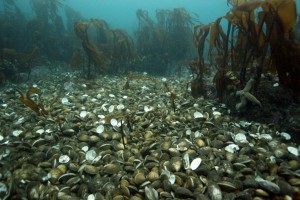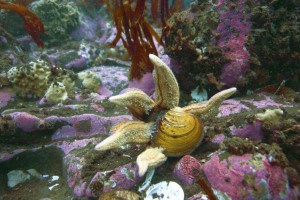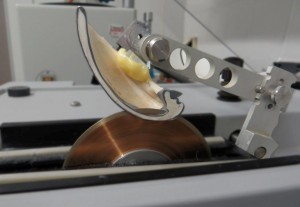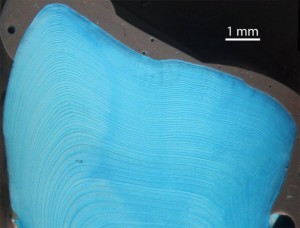</p>
I have been involved in research of the shell Arctica islandica off the shore of North Iceland.
In agust 2012 I worked with Soraya Marali, from Bernd Schöne´s group from the University of Mainz in Germany collecting the shell Arctica islandica. The research team are using bivalve shells for climate reconstructions. They are interested in old live shells and shells that died during the last 1000 years. Soraya from the Univercity in Mainz told me that the ocean quahog, Arctica islandica (LINNAEUS, 1767), is an extremely long-lived bivalve species. Some specimens can get as old as 374 years (Schöne et al., 2005) or 507 years (Butler et al., 2012). The ocean quahog builds its shell by successively adding growth layers of calcium carbonate, whereby each layer represents one year of growth. The ontogenetic age of each shell can therefore be determined precisely by counting the number of growth layers. Most importantly, the shells record information about environmental factors, like seawater temperatures, during their growth, and thus, document the climate variability over several decades or even centuries. These information can be read by measuring the widths of the growth layers and by analyzing the geochemical composition of the shell. The Icelandic shells are currently under investigation. The results of this study will further improve our understanding about the mechanisms of climate change over the last millennium.

Shells after a big storm.

Starfish eating Arctica Islandica
In Gudrun G. Thorarinsdóttir research it was found out there are 21 shell pr m2 and 2.8 kg pr m2 that means there are ower 200.000 tonn of shell Arctica islandica at shallow depth of the coast of north Iceland and Im sure we can find older shells than 507 years in this area. I have also been involved in research of fishing and behavior of the shell,how long time and how deep the shell is in the sand. To day in Iceland there are no commercial fishing of the shell. The cod and the wolffish love the shell but they cant get it out of the sandbed and if they did they can brake the thik shell with the teeth. I dive and collect shells brake them and feed the fish when diving.

Cutting Arctica Islandica

Growth Lines
